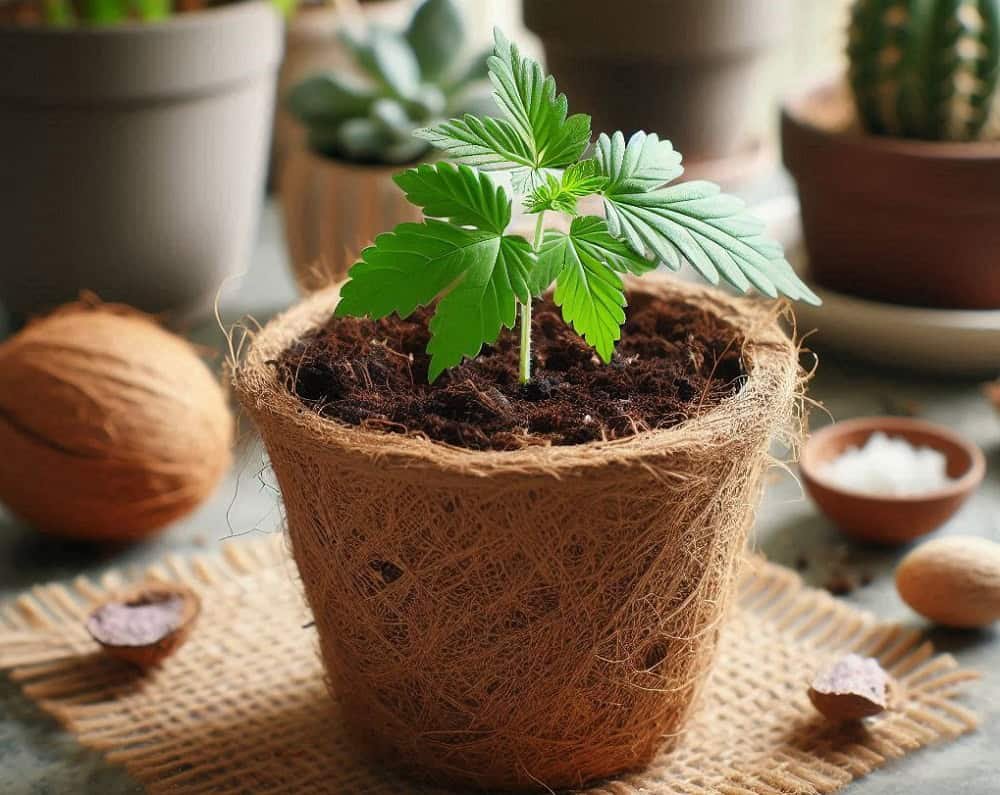
Wants to know how to use coco peat in pots?
Coco peat outranks most other growing mediums in popularity due to its remarkable qualities and the benefits it offers gardeners. Coco coir is derived from the fibrous layer of pith in coconut husks, giving it outstanding water-absorbing and retention qualities befitting most container gardening ventures. It also forms a relatively soft growing medium ideal for seed starting. Read on to learn how to effectively use coco peat in pots for seed starting and container gardening.
Why Use Coco Peat in Pots?
Commonly available as compressed and dehydrated coco peat bricks, coco peat is a popular soil replacement or additive. Its many features make it a convenient and effective seed-starting and container-growing medium. Some of the most obvious advantages associated with coco peat include:
- Coco peat is naturally antimicrobial, so it creates a pathogen-free and mould-free atmosphere for seeds and seedlings to thrive.
- It’s free of weed seeds. As a result, it eliminates competition for available resources between plants and weeds.
- Coco peat forms an excellently soft medium that’s ideal for seeds to germinate and young, delicate plants to grow.
- It has a high water absorbing and holding capacity, providing a consistent water supply to seedlings in pots.
- It’s lightweight, thus easily cartable for pot gardening.
- Coco peat is an eco-conscious growing medium that’s supremely recyclable and reusable.
- Since coco peat is reusable, it can be cleaned, strained, and used in multiple pots. Besides reducing the carbon footprint, this also contributes substantial cost savings.
- It has a neutral pH that’s ideal for most container plants.
How to Use Coco Peat for Seed Starting and Planting in Pots
Using coco peat to germinate seeds and plant crops in containers is relatively straightforward. Here’s how to go about it:
1. Rehydrate and reconstitute the coco peat brick
Place the coco peat block in a large enough container and add water until it submerges the brick. Allow the brick to saturate for about 30 minutes to expand to its maximum volume.
2. Break apart the coco peat block
If you are preparing the coco peat for seed starting, break up the coco peat into fine particles. Conversely, it’s recommended to break up the coco peat block into larger particles if you intend to use it for container gardening.
3. Stir and fluff the coco peat
Using your hands or a gardening trowel, stir and fluff the saturated coco peat until it achieves a consistently uniform soil-like texture, and then drain off the excess water.
4. Mix the coco peat with perlite or compost
If you intend to use the coco peat for seed germination, mix it with perlite in a 1:1 ratio and then stir to mix thoroughly. Perlite is a white volcanic rock that enhances coco peat’s aeration and drainage properties in preparation for seed starting. On the other hand, if you plan to use the coco peat with potting plants, mix it with compost in a 1:1 ratio and then combine the two entirely by stirring. If you want to add compost and soil, add coco peat, compost, and soil in a ratio of 1:1:1, and then stir the mixture painstakingly to ensure an even mix. Compost supplies several essential plant nutrients and improves the soil structure to be ready for crop planting.
5. Transfer the coco peat mix into seedling containers, pots, or trays
Line the containers with a suitable coco liner cut to an appropriate size for each pot, then fill the seedling containers with the coco peat mixture. Using your fingers, gently press down the mix onto the pots in readiness for seed or seedling introduction.
6. Plant your seeds or seedlings
When planting seeds in the coco peat mixture, follow the planting instructions on the seed packaging to obtain optimal seed germination. Most seeds will germinate well if planted about one inch into the coco peat medium. However, when transplanting seedlings into the coco peat mix, it’s best first to put in the potting mix at least halfway into the container, depending on the size of the plant, then gently transplant the seedlings into the centre of the pot and add in the coco peat mix until it fills the container. Ensure the potting mix fully covers the plant roots to keep the plant firm and steady.
7. Water the seedlings
Carefully water the seeds or seedlings, but avoid overwatering since coco peat holds more water than ordinary peat or soil, requiring less regular watering.
Essential Considerations when Using Coco Peat in Pots
When using coco peat for container gardening, bear in mind that:
- Coco peat can build up high salt levels over time. Although you can use desalination compounds to counter these salts, opting for low-salt coco peat is the best approach.
- Coco peat lacks essential plant nutrients, so you must add all requisite plant foods into the mix when reconstituting the coco coir bricks to avail the nutrients to plants.
- Although coco peat is entirely organic, it takes a long time to degenerate fully. Thus, you can clean, string, reuse, or recycle it several times instead of discarding it.
Editorial Staff
Editorial Staff at Earth Scape are experts in coco peat.
